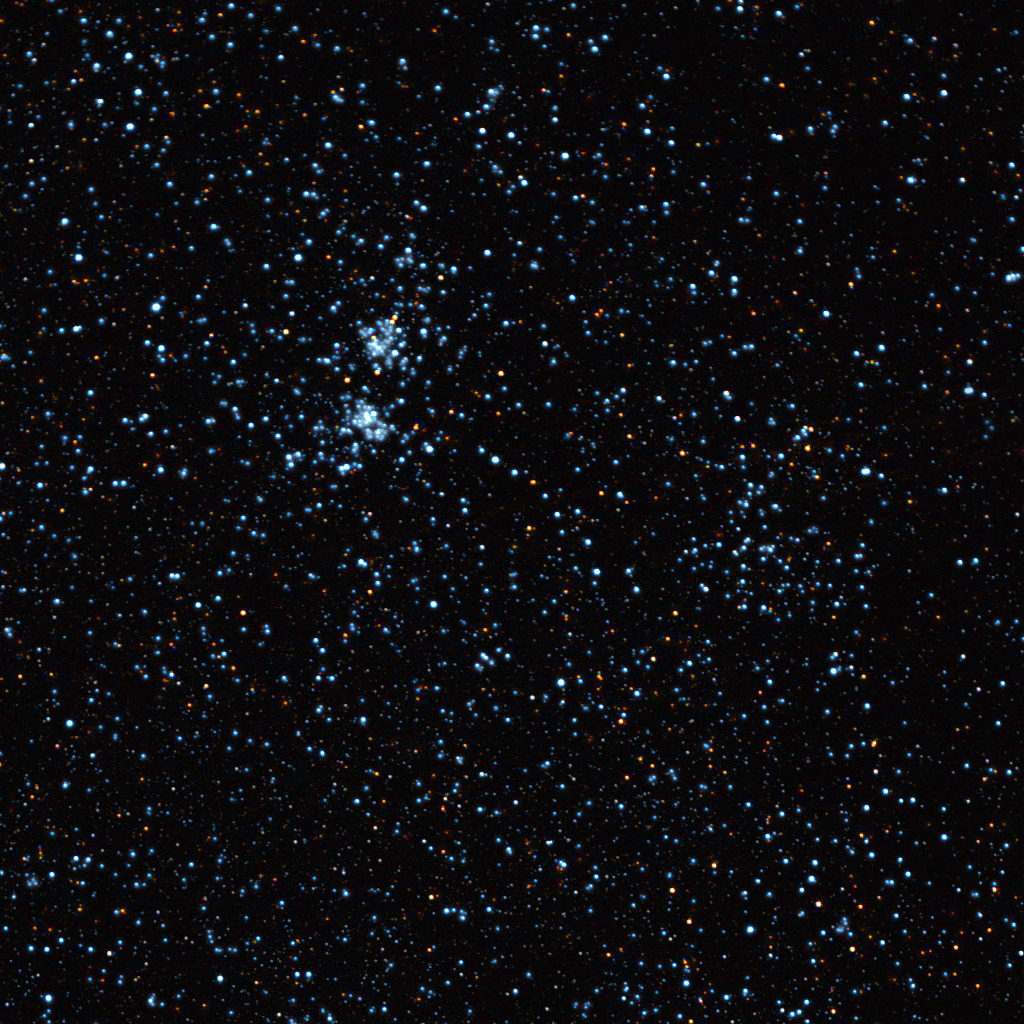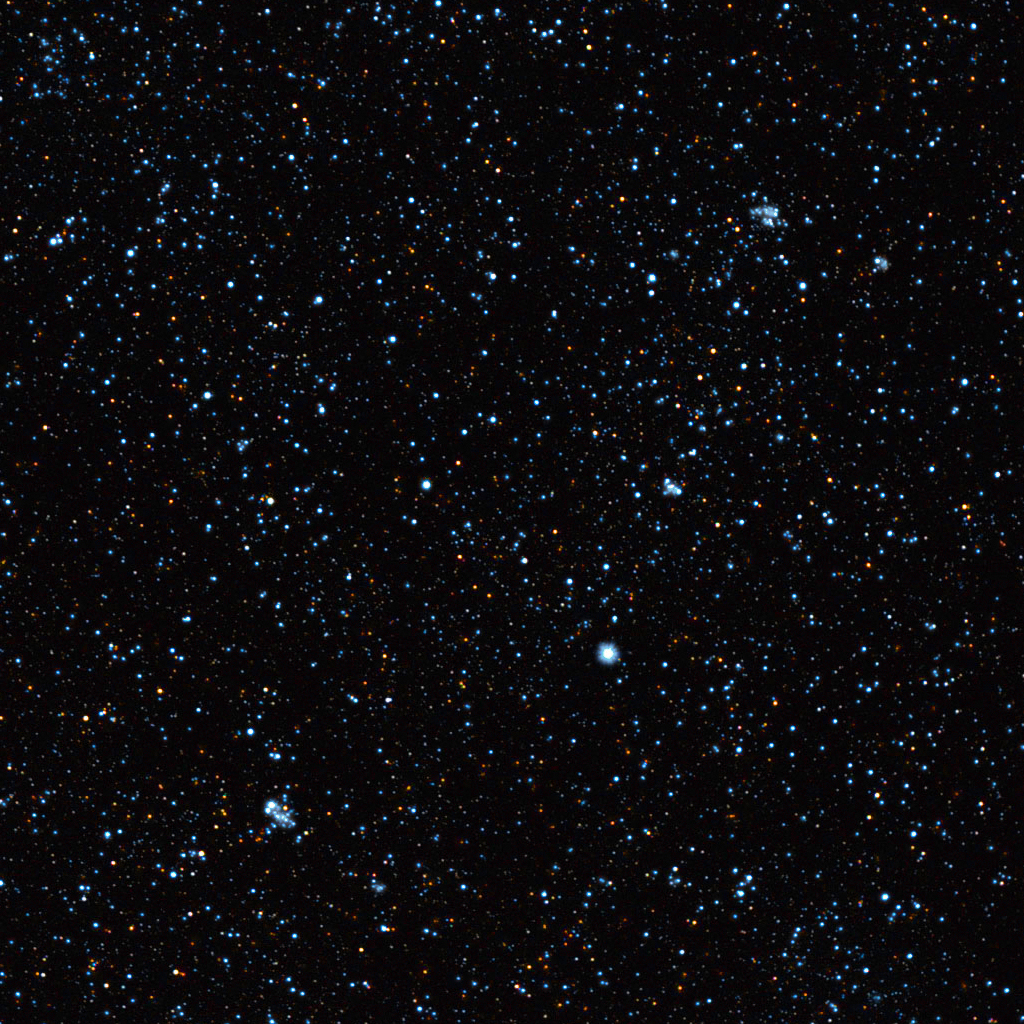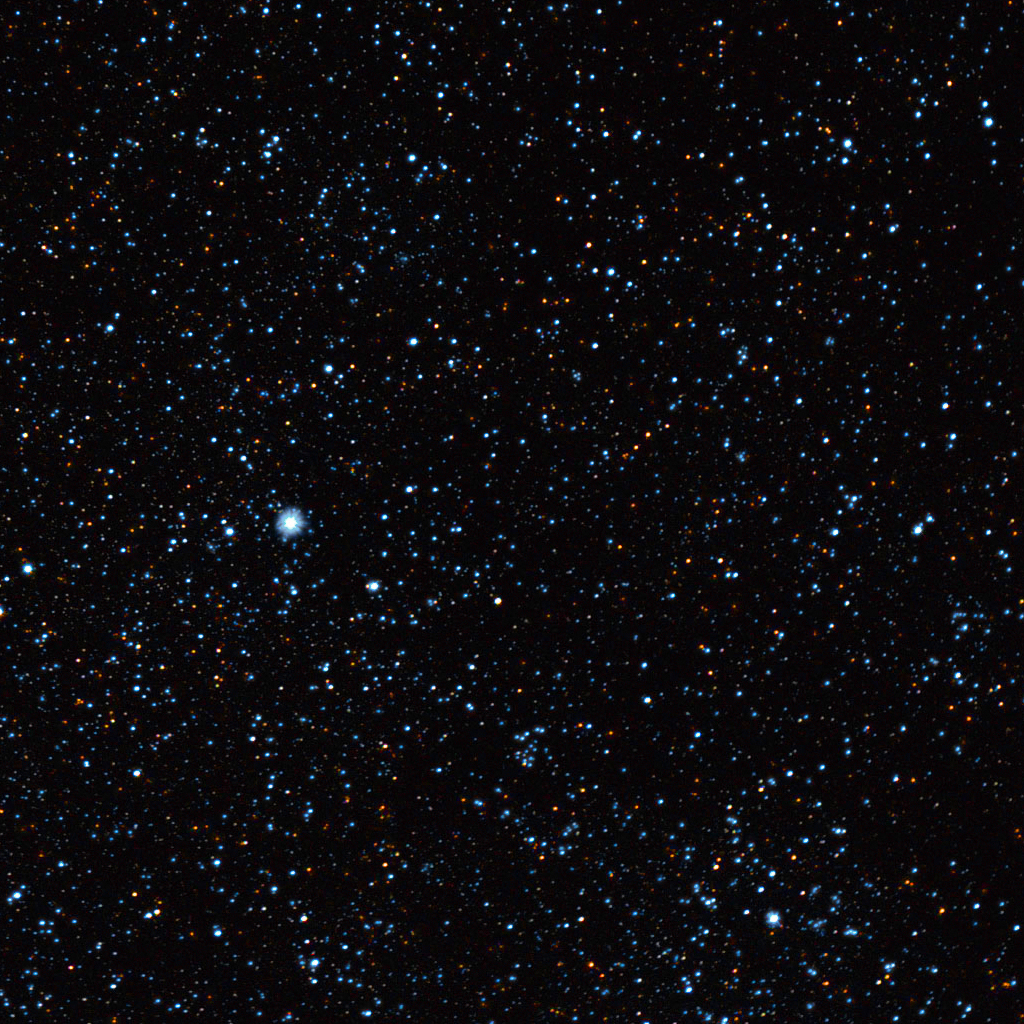My streak of pictures taken with the 50mm lens continues, as I await the final verdict on the fate of my guider camera, which is currently out for repair. This time I turned my attention to the area south of the Double Cluster. In the first image, above, you can see the Double Cluster itself, aka NGC869/884, which I imaged with the 80ED semi-apo recently, NGC744, a small open cluster 399 light-years away, and NGC957, another small open cluster, this time 5900 light-years away.
The second picture shoes NGC663, an interesting and young open cluster in Cassiopeia. About 25 to 30 million years old and 6850 light-years away, this cluster presents a high number of Be stars, i.e. stars with prominent emission lines of hydrogen in their spectra. Also in this picture, NGC457, also known as the Owl Cluster or the ET Cluster, is 21 million years old, 7900 light-years away, and has over 150 stars of magnitude between 12 and 15.
In the last picture you can see NGC225, an open cluster 1690 light-years away. The cluster is associated with some nebulosity, which of course is not visible in this image.



